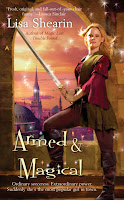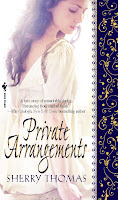STATUS: I’m leaving for Chicago today so it was a little frantic trying to get ready to leave town again. Sorry for not blogging yesterday.
What’s playing on the iPod right now? WHERE ARE YOU GOING by Dave Matthews Band
I’m going to take a stab at sharing the “hands-on” exercise with you online. Obviously this is a lot easier to do while giving the presentation in person but what the heck. Let’s see how well it translates.
So here is the first step in identifying the plot catalyst that starts the story forward so you can identify it for yourself in your own novel.
What’s interesting is that the first step is something that actually can’t be done during the presentation itself so all you blog readers will have a leg up on this.
Before writing your pitch paragraph for your query letter, I strongly recommend that you take the time to visit your local bookstore or library in order to peruse the shelves for recently published novels that are in your genre and in the same vein as your story. In other words, if you write historical romance, go and read the back cover copy of historical romances in your time setting. If you write epic fantasy, go and look at epic fantasy back cover copy, etc. If you write contemporary literary fiction, pull out some of the latest offerings in that realm.
I think you get the picture.
But here’s the next step. I want you to read the back cover copy. Get a feel for it. Then open the book and read the first 30 to 50 pages. Then go back to the cover copy. Is there a plot aspect that is highlighted in that copy that occurred within the first 50 pages? What was it? Did you notice it while you were reading?
Let’s say you write non-epic fun fantasy and you are shaping your query letter pitch blurb so you head to the bookstore and pick up Lisa Shearin’s MAGIC LOST, TROUBLE FOUND. If you did, here is what you would read in the back cover copy:
.jpg)
My name is Raine Benares. I’m a seeker. The people who hire me are usually happy when I find things. But some things are better left unfound…
Raine is a sorceress of moderate powers, from an extended family of smugglers and thieves. With a mix of street smarts and magic spells, she can usually take care of herself. But when her friend Quentin, a not-quite-reformed thief, steals an amulet from the home of a powerful necromancer, Raine find herself wrapped up in more trouble than she cares for. She likes attention as much as the next girl, but having an army of militant goblins hunting her down is not her idea of a good time. The amulet they’re after holds limitless power, derived from an ancient, soul-stealing stone. And when Raine takes possession of the item, it takes possession of her.
Now her moderate powers are increasing beyond anything she could imagine—but is the resumé enhancement worth her soul?
In this cover copy, can you spot the plot catalyst?
It starts in the third sentence. Her friend Quentin has stolen an amulet, one of limitless power (hey it’s fantasy!). Once Raine takes possession of it, she’s in a heap of trouble—especially because it’s enhancing her powers. She is becoming something other than your average seeker making a living.
If you read MAGIC LOST, Raine coming into possession of the amulet does indeed happen within the first 30 pages of the novel.
Now the sequel from Ace, ARMED & MAGICAL, is hitting shelves this week. Because it’s a sequel, the cover copy reads just a tad differently:

My name is Raine Benares. Until last week I was a seeker—a finder of things lost and people missing. Now I’m psychic roommates with the Saghred, an ancient stone with cataclysmic powers. Just me, the stone, and all the souls it’s ingested over the centuries. Crowded doesn’t even begin to describe it…
All Raine wants is her life back—which means getting rid of the stone and the power it possesses. To sort things out, she heads for the Isle of Mid, home to the most prestigious sorcery school, as well as the Conclave, the governing body for all magic users. It’s also home to power-grubbing mages who want Raine dead and goblins who see her as a thief. As if that’s not enough, Mid’s best student spellsingers are disappearing left and right, and Raine’s expected to find them.
Lives are at stake, goblins are threatening to sue, mages are getting greedier, and the stone’s power is getting stronger by the hour. This could get ugly.
But here’s what I want to point out, the catalyst that starts this sequel is the fact that the student spellsingers are disappearing—which, wait don’t tell me, happens within the first 30 pages of the story.
So it doesn’t matter what type of genre you write, you are looking for the plot element (the event) that will launch the story. This is often easier to find in genre fiction but it still works for literary fiction.
Next up, taking that plot element and deciding what to include along with it. As I mentioned in my blog pitch workshop entries, back cover copy runs only 7 to 9 sentences long.
And that’s your goal for nailing the pitch paragraph in your query letter.


.jpg)

.jpg)
